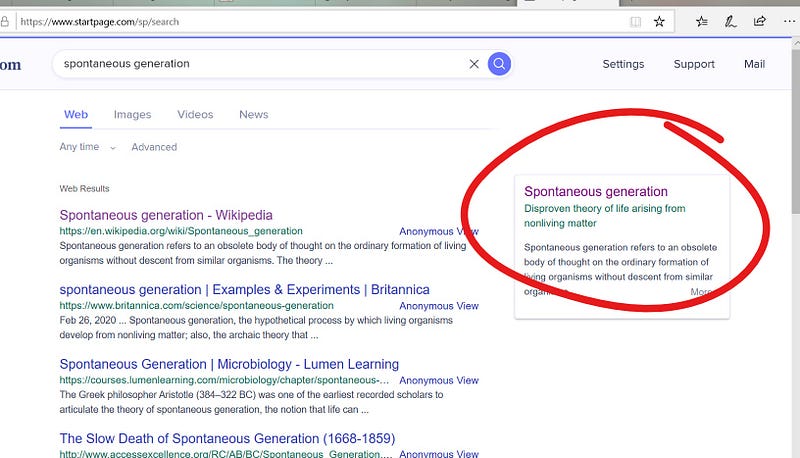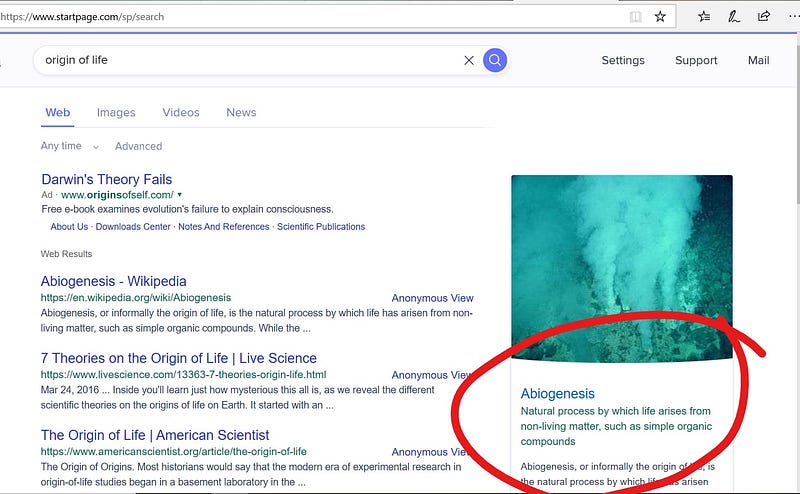Exploring the Origins of Life: Evolution vs. Spontaneous Generation
Written on
Chapter 1: The Resilience of Spontaneous Generation
You might be weary of hearing about spontaneous generation. After all, this series is focused on evolution, not a theory that has supposedly been laid to rest. However, this concept remains relevant and very much alive.
“Wait, didn’t I assert in my earlier posts that this idea has been debunked?” Well, don’t just take my word for it. Reflect on your school lessons. Do you recall studying spontaneous generation? Louis Pasteur’s famous experiment that supposedly put this theory to rest? To refresh your memory, here's a visual representation of that experiment.

However, it's wise not to rely solely on your recollection. According to Wikipedia, “Pasteur was instrumental in disproving the doctrine of spontaneous generation.” Study.com describes it as an “outdated theory.” The Biology Dictionary defines spontaneous generation as “an inaccurate and outdated hypothesis regarding the emergence of life from non-living matter.” Furthermore, a paper from a microbiologist available on ResearchGate (a more scholarly source than Wikipedia) states that while Pasteur might not have been the one to disprove it, he aligns with the consensus that “microorganisms do not originate from lifeless matter.”
“Okay, okay,” you might say, “we understand that life doesn't arise from non-living matter.” But do you truly grasp its implications? If life cannot emerge from non-life, that would mean we are either trapped in a fantastical Matrix scenario or that the theory of evolution falls apart.
The theory of evolution posits that spontaneous generation is how life originated. Darwin famously suggested it may have begun in “a warm little pond.” While charming, this notion lacks scientific rigor, resembling a tale for children. Since then, scientists have developed more sophisticated theories suggesting that life emerged from chemical reactions. In essence, life arose from non-life.
Yet, spontaneous generation refuses to fade away. So why is there a consensus that it has been disproven? If you can find a credible source asserting otherwise, I’d like to see it.
When you search for “spontaneous generation,” this is generally what you’ll find:

Now, let’s search for “origin of life.” What do we discover?

This is perplexing. Am I alone in noticing this contradiction? It appears that most of the scientific community holds two conflicting beliefs with strong conviction:
- Spontaneous generation, the idea that life can arise from non-living matter, is false.
- Abiogenesis, the notion that life can emerge from non-living matter, is considered true.
These are indeed confusing times. Proponents of evolution attempt to clarify the situation by asserting that abiogenesis differs from spontaneous generation. Biology Online explains:
“It is important to note that the contemporary hypothesis of abiogenesis is distinct from the outdated notion of spontaneous generation. The modern theory suggests that primitive life originated from non-living matter over millions of years, as opposed to more complex organisms appearing in a short time frame.”
So, while spontaneous generation suggests complex life forms could emerge quickly, abiogenesis posits that primitive life forms developed over an extended period. This still implies life originating from non-life, which is supposedly disproven.
Let’s entertain this abiogenesis idea for a moment. How do scientists seek to elucidate and potentially validate the chemical reaction that initiated it all?
Wikipedia states, “Although the occurrence of abiogenesis is widely accepted among scientists, there is no universally accepted model for the origin of life.” American Scientist notes, “One of the most pressing questions — how did life arise from inorganic matter? — remains a profound mystery.” The National Science Foundation is currently inviting research proposals aimed at “addressing grand challenge questions in the origin of life.” In essence, they are still working to unravel the mystery of life’s beginnings.
An article in the International Journal of Astrobiology claims, “One of the universe's greatest enigmas is the existence and emergence of life.” It further states, “Yet, it remains an unresolved issue.”
Theories abound regarding that “warm little pond,” yet they remain just that—speculative theories. The sheer number of theories indicates that the question of life’s origin is still unresolved. Evolutionists are diligently attempting to answer this perplexing question, but thus far, they have not succeeded.
Have there been experiments? Certainly! Scientists have mixed chemicals in attempts to create near-life forms. However, none of these experiments have conclusively proven their results. If any one of them had, we wouldn’t still be facing an “unknown” and an “unsolved problem.”
For curiosity’s sake, let’s examine some of these experiments. Biologist Dr. Menton explains:
“In another ‘evolution simulation’ experiment, Sidney Fox produced protein-like molecules by heating pure, dry amino acids to high temperatures. Upon cooling in water, these formed small globules, which he dubbed ‘microspheres.’ While evolutionists refer to these microspheres as ‘protocells,’ implying a connection to early living cells, the only similarity is their small, spherical shape.”
Additionally, one article reviews two studies that, although they didn’t succeed in creating life from non-living materials, made strides in the right direction. One study utilized acetaldehyde, a substance that decays rapidly (within hours). The researchers required it to last a few days, so they sealed it in a container. The question then arises: how did life originate from a sealed container billions of years ago, long before modern storage solutions were available?
The second study faced similar challenges, utilizing conditions unlikely to occur naturally without scientific intervention. They did manage to produce bonded aminonitriles, which are precursors to the amino acids vital for life. However, they did not demonstrate “that bonded aminonitriles could be arranged into the correct sequence of amino acids or fold into functional proteins under early Earth conditions, both essential for protein functionality.”
So where does all this leave us? Let’s summarize. The theory that life can arise from non-living material, known as spontaneous generation, has been decisively disproven. Yet, the theory that life can originate from non-living material, termed abiogenesis, is posited as the means by which all life — from earthworms to jellyfish to tigers to humans — first began. This abiogenesis theory remains “a great unknown” and “an unsolved problem.” Numerous experiments have been conducted to validate it, yet they have largely been inconclusive and flawed. Thus, we arrive at the current understanding of the origin of life.
Keep an eye on those “warm little ponds”; you never know when new life forms might spring forth.
Chapter 2: The Intersection of Science and Philosophy
In the first video titled "Life from Non Life - How Evolution Powers Everything," Professor Lee Cronin delves into the intricate relationship between evolution and the possibility of life emerging from non-life. This thought-provoking discussion invites viewers to reconsider preconceived notions about the origin of life.
The second video, "Mathematical Challenges to Darwin's Theory of Evolution," examines the mathematical complexities surrounding Darwinian evolution. This video presents critical insights into the ongoing debates within the scientific community regarding the validity of evolutionary theory.